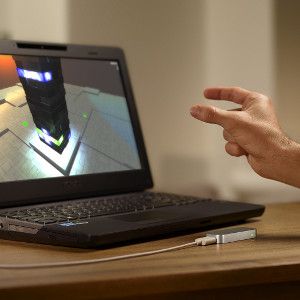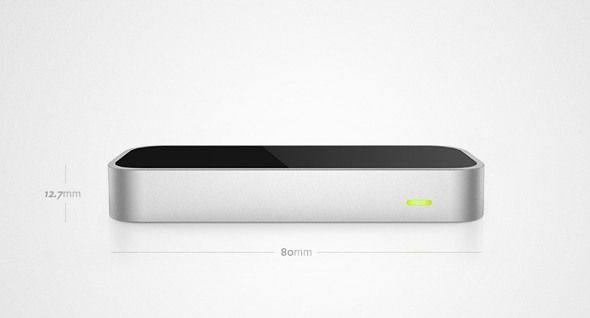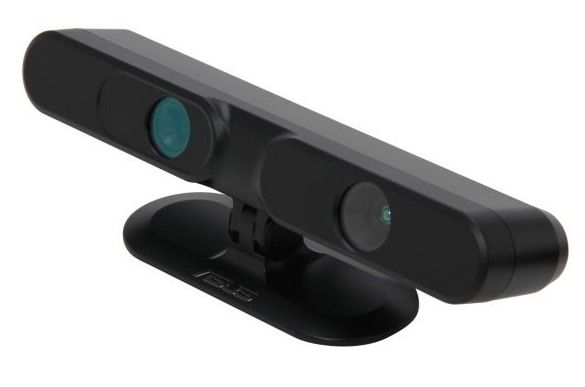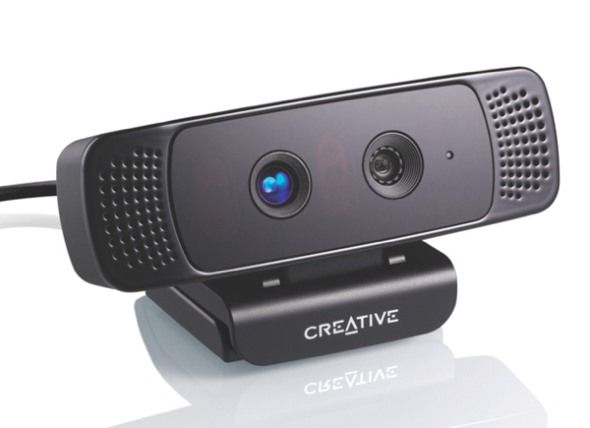Microsoft's Kinect was an ambitious peripheral, and while it hasn't revolutionized gaming (yet), it has shown just what gesture recognition can do – and others have taken note. Even Intel, the world's largest chipmaker, has said they'd like to make gesture control a standard feature in laptops in the near future.
The potential for gesture recognition seems massive, but so far, it's also an unknown. How should developers create apps for it, what's the best hardware, and how should the feature be standardized? These important questions are up in the air, so several companies are trying to answer them. Let's take a look at the front-runners.
Leap Motion
The Leap Motion sensor came out of nowhere in 2012 to become a front-runner in the emerging field of gesture recognition. While larger companies seem unsure of their grasp on this new technology, Leap Motion is confident and ready. Perhaps that's because, unlike the competition, gesture recognition is this company's only business.
Unlike most other devices, which attempt to capture data from an entire room, Leap keeps its focus on your hands. While this may seem a step backwards, reducing the area the sensor attempts to read also reduces the size and cost of the hardware. The device, which is due to ship July 22, can be ordered for just $79.99. That's a huge reduction in price; competitors are priced at $120 or more and the Kinect v2 is $399, though that's a pre-order price for developers only.
The economics of Leap has attracted outside attention. ASUS and HP have said they will integrate the device in select laptops. That's important because it creates an install base, and if there's an install base, developers will have more incentive to create apps supporting gesture recognition. While this technology is still in its infancy there's no way to deny Leap has taken an early lead and everyone else is now playing catch-up.
ASUS Xtion / Primesense Carmine
Before making a deal with Leap, ASUS had a gesture recognition camera known as the Xtion Pro. This newer camera has several advantages over Microsoft's Kinect including lighter weight, smaller size, the ability to power on via USB alone, better image quality and a color sensor (in the Xtion Live).
In theory, these advantages give the ASUS product an advantage over Microsoft, but the Xtion never really took off. Microsoft's classic advantage, size, has resulted in a larger install base and generally better driver support; two factors that make developers more inclined to use the Kinect. Also, the Xtion doesn't have the positioning motor found in Kinect, so it must be manually adjusted.
ASUS hasn't said much about the Xtion lately, so it's not clear if the device has a future. The sensor is sold for just $119 with development software included, so those who want an inexpensive gesture camera may find use for it.
Developers who are leery of the seemingly abandoned Xtion should instead check out the Carmine. Made by Primesense, which developed the technology powering both the Xtion and Kinect, the Carmine has nearly identical specifications. The price is higher, at $200, but the platform is still in development and has better driver support. Serious developers will find that well worth an extra $80.
Intel Perceptual Computing And Creative Senz3D
At CES 2013, Intel announced its "perceptual computing" initiative, a broad move by the chip-maker to pursue multiple forms of alternative input. One of these is gesture recognition, of course, which is currently made possible by the Creative Senz3D camera. Consumers can't buy the device yet (it's due for release this fall), but developers have been exploring its limits since September of last year.
One of the demos Intel showed on-stage involved the manipulated of 3D objects with gesture input. Using the Creative Senz3D camera, a developer was able to interrupt the flow of 3D objects, fire a ballista at a tower and even play Portal 2 using gestures to pick up and manipulate items in the game world. While these demos may seem silly, they show that the Senz3D camera can detect subtle movement effectively. That's a must for any serious gesture recognition system.
But the most important point is simply this: Intel's involved. As supplier of over 80% of the world's PC processors, the company has a lot of clout with both hardware manufacturers and developers. If Intel can show that the system works, the company should have no problem encouraging other companies to develop for and integrate the hardware.
Conclusion
The current state of the gesture recognition is a David vs. Goliath story. On one side there's the small companies, Leap Motion and Primesense, which specialize in this field and sell specialized, economical hardware. And across the ring there's Microsoft and Intel, two giants of technology who have a ton of resources and are using them to create more elaborate projects. At the moment it's hard to say which approach will win, but what can be said for sure is that gesture recognition has a future – and it's going to arrive more quickly than you think.




